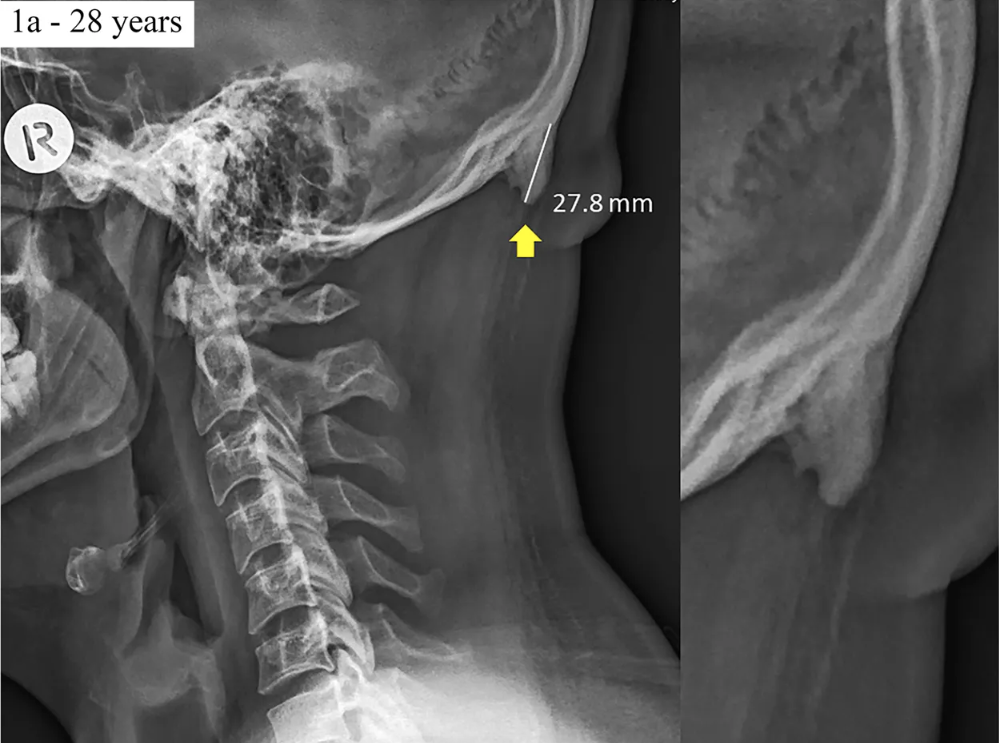
More than a year ago, a pair of Australian researchers published a paper in Scientific Reports to little fanfare. In it, they noted that a surprising number of young people were developing bone growths on the backs of their skulls. The researchers posited that this was due to the amount of time they spent looking down at screens.
Then, in June, the BBC cited the paper in a story about modern life’s impact on the skeleton. And within a matter of days, headlines from across the globe reported that teenagers were growing horns.
The paper is noteworthy, in that it potentially reflects one way our physical bodies may be adjusting to our ever-present gadgets. But the implications likely aren’t as terrifying as those headlines suggest—especially since, in September, the authors significantly qualified their findings in a correction posted on Scientific Reports’ website.
What the Research Actually Found
In 2016, University of the Sunshine Coast professors David Shahar and Mark Sayers found that, out of 218 people ages 18 to 30, about 40% had a bone growth near the base of the skull called an “enlarged external occipital protuberance,” or EEOP.
They built on that in the 2018 study by examining X-rays from 1,200 people, ages 18-86. In that study, a third of the X-rays showed growths. People ages 18 to 30 were the most likely to have an EEOP, which surprised the researchers, who write in the study that they’d expected older adults to have the highest risk.
What About Phone Use?
In theory, constantly tilting your heavy head forward to look at screens, instead of holding it upright as it’s meant to sit, may strain the neck and back of the head enough to result in bone growth in the surrounding tendons and ligaments, the researchers say.
However, neither study actually assessed individuals’ phone use, so they couldn’t draw any concrete conclusions about whether the bumps were caused by device use; that’s a hypothesis the researchers made based on the demographics of frequent gadget users.
In their correction, the authors clarified that their conclusion was “speculative,” writing that, “Clearly, the cross-sectional nature of this retroactive case study means that we are unable to draw direct causal links between EEOP formation and other issues such as poor posture and/or the use of mobile phones and other hand-held modern technologies.”
What’s Up With the “Horn” Headlines?
Causation issues aside, calling these growths “horns” is a bit of an overstatement. The growths in the latest study were between 10 and 30 millimeters—likely less dramatic than the mental image inspired by the headlines.
In addition, skull growths of this nature, albeit typically smaller ones, have been spotted plenty of times before. They’re known to be most common in men, and are typically seen among the elderly, but young people have them, too. A 2017 paper published in the BMJ notes that an occipital growth is normal, though sometimes painful, and “often presents in late adolescence due to the growth spurts.” Bone spurs can also pop up all over the body, literally from head to toe.
Even the paper’s authors aren’t terribly concerned by the “horns” themselves, though they may be associated with head, neck and back pain. “The thing is that the bump is not the problem, the bump is a sign of sustained terrible posture, which can be corrected quite simply,” Sayers told an Australian news website in June. They further emphasized that takeaway in the September correction, writing that, “Care should be taken to avoid over generalising these results to an asymptomatic general population.”
It’s no secret that constant technology is destroying our posture. The phenomenon of “text neck,” or neck strain associated with staring down at a screen, is widely reported, and plenty of people have experienced back pain after a day spent slouched over a laptop. These issues are cause for concern, of course, but they’re not irreversible.
It usually just takes a bit of mindfulness, stretching and muscle-strengthening (and maybe a workspace reorganization) to improve your posture, and alleviate the pain that comes along with it.
Updated, Sept. 20, 2019: This story has been updated with information from an author correction published in Scientific Reports on Sept. 18, 2019.
More Must-Reads From TIME
- The 100 Most Influential People of 2024
- Coco Gauff Is Playing for Herself Now
- Scenes From Pro-Palestinian Encampments Across U.S. Universities
- 6 Compliments That Land Every Time
- If You're Dating Right Now , You're Brave: Column
- The AI That Could Heal a Divided Internet
- Fallout Is a Brilliant Model for the Future of Video Game Adaptations
- Want Weekly Recs on What to Watch, Read, and More? Sign Up for Worth Your Time
Write to Jamie Ducharme at jamie.ducharme@time.com